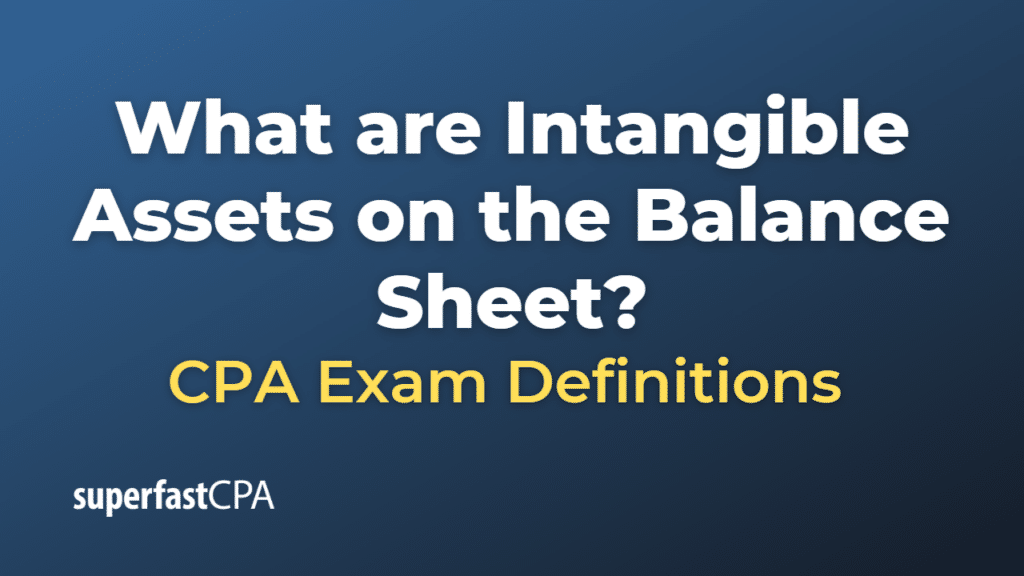Intangible Assets on the Balance Sheet
Intangible assets on a balance sheet are a representation of a company’s non-physical assets that generate economic benefits for the company. These assets have a useful life of more than one year and are usually derived from intellectual property or legal rights.
Common examples of intangible assets include:
- Patents: These are exclusive rights granted to an entity to manufacture, sell or use an invention for a certain period of time.
- Trademarks: A recognizable symbol, logo, or phrase that represents a company or its products.
- Copyrights: Legal rights that protect original works of authorship such as books, music, film, and software.
- Brand recognition: The value that a company has built over time due to recognition and favorable perception by customers.
- Goodwill: This is usually seen in business acquisitions and represents the excess of the purchase price over the fair value of identifiable net assets (which includes tangible and other intangible assets) of the acquired company.
- Customer Lists: The value associated with the future profits expected from an established customer base.
- Software: Internally developed or externally acquired computer programs.
- Licenses and Franchises: Legal rights granted by a governmental body or a company to perform certain activities or sell certain products.
On the balance sheet, intangible assets are typically reported in a separate line item under non-current assets. They are usually reported at their acquisition or development cost less any accumulated amortization and any accumulated impairment losses. The amortization of intangible assets (similar to depreciation for tangible assets) is a process that allocates the cost of the assets over their useful lives.
Understanding the intangible assets of a company can provide important insights into the sources of its future income and competitive advantages. However, because intangible assets do not have physical substance and often depend on legal rights, their valuation can be complex and involve significant estimates and judgements.
Example of Intangible Assets on the Balance Sheet
Let’s take the example of a fictional tech company called “TechNova” to illustrate how intangible assets appear on the balance sheet.
Imagine that TechNova has developed a revolutionary software product. They’ve spent $2 million on research and development, which under the accounting rules they have capitalized on their balance sheet as an intangible asset because it meets certain criteria (such as demonstrating future economic benefit).
In addition, TechNova has acquired a smaller company for $10 million to obtain a unique algorithm, with the fair value of the identifiable net assets of the acquired company being $8 million. The excess $2 million is recorded as goodwill, another intangible asset.
Also, TechNova has a well-recognized brand that it has spent $1 million building over the years. This is also an intangible asset.
Now, if we look at TechNova’s balance sheet, we might see something like this under Non-Current Assets:
- Property, Plant, and Equipment: $5 million
- Intangible Assets:
- Software Development Costs: $2 million
- Acquired Algorithm (from business acquisition): $8 million
- Goodwill (from business acquisition): $2 million
- Brand Value: $1 million
- Total Intangible Assets: $13 million
So, the total value of TechNova’s intangible assets is $13 million. This is the value that TechNova’s intangible assets would be reported on the balance sheet.
Remember, this is a simplified example and in real-world financial reporting, each line item may need to be reduced by any accumulated amortization and any impairment losses that have been recognized.
This example should give you a sense of what intangible assets might look like on a balance sheet and how they represent the non-physical resources a company has that contribute to its earning capacity.














